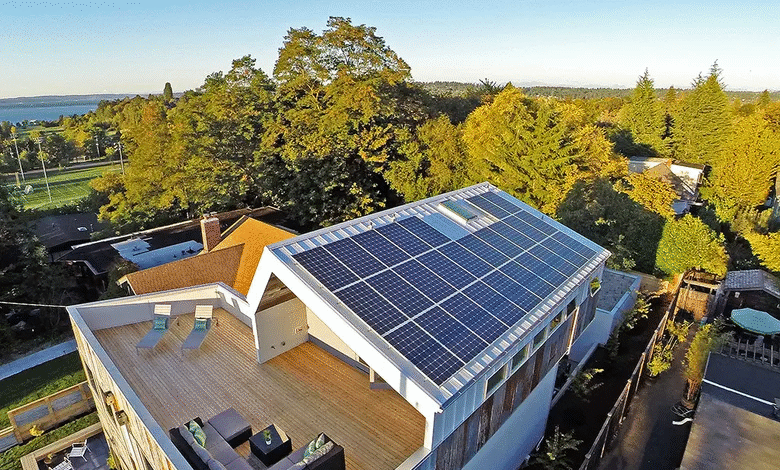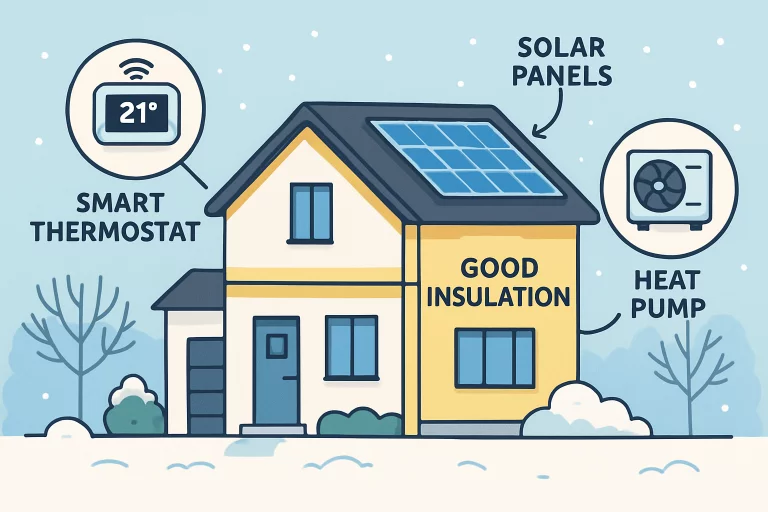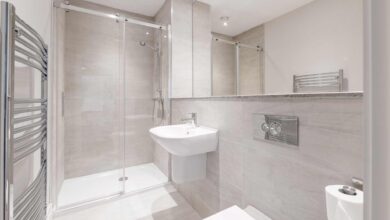Energy-Efficient Heating Solutions for Modern Homes

Introduction
As environmental consciousness and economic pressures shape everyday decisions, pursuing energy-efficient heating solutions has become central to the modern lifestyle. Today, homeowners are searching for ways to combine comfort with sustainability, aiming to reduce monthly expenses while making a meaningful contribution toward a cleaner planet. Thanks to cutting-edge technologies and more brilliant home designs, achieving a warm, cozy environment doesn’t have to come at the cost of high utility bills or excessive carbon emissions. Advancements in heating systems, smart controls, and comprehensive insulation techniques are transforming how homes maintain comfort, seamlessly merging efficiency, savings, and environmental responsibility.
Many homeowners may find the sheer number of new technologies and products overwhelming. Fortunately, familiarity with the latest innovations and energy-saving strategies empowers them to make informed decisions that deliver lasting results. This article thoroughly examines the top methods for upgrading your home’s heating system—from intelligent thermostats and renewable energy solutions to insulation improvements, each tailored to deliver superior efficiency, long-term savings, and reliable comfort, regardless of the season.
Smart Thermostats
Smart thermostats are revolutionizing how homeowners manage indoor comfort, offering precision and customization far beyond what traditional systems provide. These advanced devices use machine learning to analyze daily routines and adjust heating or air conditioning output based on occupancy trends and real-time weather changes. Connected through smartphone apps, smart thermostats enable remote control of your home’s climate, ensuring efficiency whether you’re home or away. Features like geofencing, adaptive scheduling, and integration with voice assistants like Alexa and Google Assistant enhance convenience and control. By intelligently minimizing energy usage during vacant periods, studies show they can reduce annual heating and air conditioning costs by 10–15%. It’s a practical step for anyone aiming to cut utility expenses while supporting sustainability. For more tips on cutting costs and improving comfort, visit Maximize Savings With Energy-Efficient Heating Solutions.
High-Efficiency Boilers
Modern high-efficiency boilers are among the most powerful upgrades for reducing your home’s energy consumption. Unlike standard boilers, condensing models are engineered to recapture heat from exhaust gases, often reaching efficiency ratings exceeding 90%. This means that up to 90% of the fuel burned is converted into usable heat for the home—a dramatic increase over older systems. These advanced boilers often feature smart controls that can work with other smart home devices for greater precision and efficiency. Retrofitting existing systems with these smart controls enables detailed scheduling and demand-based heating, reducing wasted energy. Not only do high-efficiency boilers help cut fuel use and emissions, but they also deliver more responsive and reliable warmth to every room. Learn more about these modern advancements at Modern Heating Technologies Transforming Home Efficiency.
Heat Pumps
Heat pumps have rapidly gained favor due to their exceptional efficiency and versatile operation. Unlike conventional furnaces, heat pumps work by transferring heat, not generating it—using electricity to extract warmth from outdoor air or the ground and moving it indoors. The most common types, air-source heat pumps, offer exceptional efficiency for moderate climates, providing cool air in summer and warmth in winter with the flip of a switch. Though more expensive to install, ground-source(geothermal) heat pumps leverage the stable temperatures beneath the earth’s surface, providing steadfast performance and efficiency even in extreme weather. With efficiency factors reaching 300-400%, heat pumps can deliver up to four units of heat for every unit of energy they consume. Over time, this can mean substantial energy savings, lower utility bills, and a reduced environmental footprint, making them a key investment for homes aiming to lead in sustainability.
Radiant Floor Heating
Radiant floor heating is one of the most comfortable and even heating solutions available today. By circulating warm water through pipes installed beneath the floor, this system delivers heat directly to the living space, eliminating drafts, cold spots, and the noise often associated with forced-air systems. The even distribution of warmth creates a luxurious, cozy atmosphere, especially appreciated during the coldest months. Additionally, radiant floor heating operates efficiently at lower supply temperatures, reducing the overall workload on your heat source and saving energy. Available for many types of flooring—from elegant hardwoods to durable tile and even carpet—radiant systems allow for creative freedom in home design while ensuring every corner of your space feels inviting and warm. Read more about innovative heating upgrades at Innovative Heating Solutions for Modern Homes.
Geothermal Heating
As one of the most advanced and sustainable heating options, geothermal heating utilizes the constant temperature several feet below the earth’s surface. By circulating water through a series of buried pipes, geothermal heat pumps collect and transfer this stable thermal energy indoors. While the initial installation involves a higher investment due to the complexity and excavation required, the payoff comes from extremely low operating costs and minimal maintenance over decades of use. Geothermal systems are celebrated for producing ultra-low emissions, offering exceptional efficiency, and the satisfaction of knowing your home’s heating system draws almost entirely from a renewable source. For eco-minded homeowners looking to invest in long-term performance and sustainability, geothermal represents a future-proof solution with compelling financial and environmental benefits.

Solar Heating
Solar heating solutions capture energy directly from the sun, providing a clean, renewable space and water heating source. Solar thermal panels, typically installed on rooftops, collect solar energy and transfer it via a fluid to a storage tank or directly into the home’s heating distribution system. These systems are particularly effective in sunny regions, significantly reducing reliance on fossil fuels while providing year-round heating and hot water. Solar heating can be designed to supplement existing systems, further reducing energy bills and offering resilience in case of grid outages. Homeowners achieve cost savings by integrating solar power with other efficient heating methods, significantly reducing the overall environmental impact.
Insulation and Sealing
Any investment in heating technology should be paired with robust insulation and air sealing for maximum payoff. Heat loss through poorly insulated windows, doors, attics, and basement walls can force even the most advanced systems to work overtime. Addressing these weaknesses with quality materials—seatherstripping for windows and doors, spray foam for attics, and caulking for gaps and cracks—ensures twofold benefits: lower energy bills and enhanced comfort through consistent indoor temperatures. Insulation upgrades are often the most cost-effective energy-efficient home improvement, as they reduce the load on your heating system while keeping the warmth you pay for inside your home where it belongs.
Integrating Smart Home Systems
Integrating heating systems with comprehensive smart home platforms unlocks the full potential of energy savings and comfort. These platforms connect devices throughout your home and automate climate adjustments according to schedules, occupancy sensors, or real-time weather data. Remote monitoring and control let you fine-tune settings from anywhere using a smartphone or tablet, while notifications alert you to inefficiencies or necessary maintenance. You can create custom comfort scenes that adapt automatically throughout the day or year by synchronizing your heating system with lighting, shading, and ventilation controls. Smart integration makes it possible to maintain ideal indoor temperatures, minimize wasted energy, and enjoy seamless, easily managed home comfort.
In conclusion, adopting energy-efficient heating solutions delivers enduring benefits: greater year-round comfort, consistent control over costs, and a dramatically reduced carbon footprint. Whether you opt for smart thermostats, high-efficiency boilers, radiant floor heating, or embrace future-ready solutions like geothermal and solar, you’re investing in a healthier home and a greener world, supported by the knowledge and technology to enjoy peace of mind for years.




